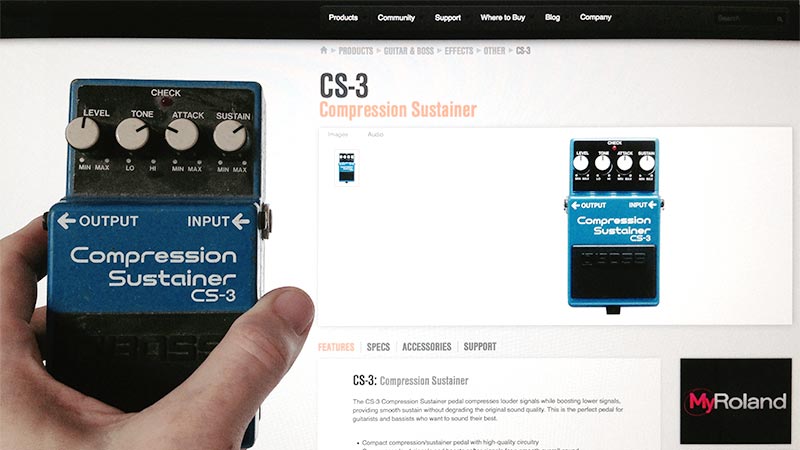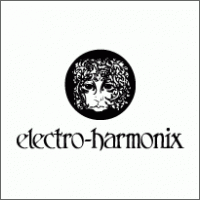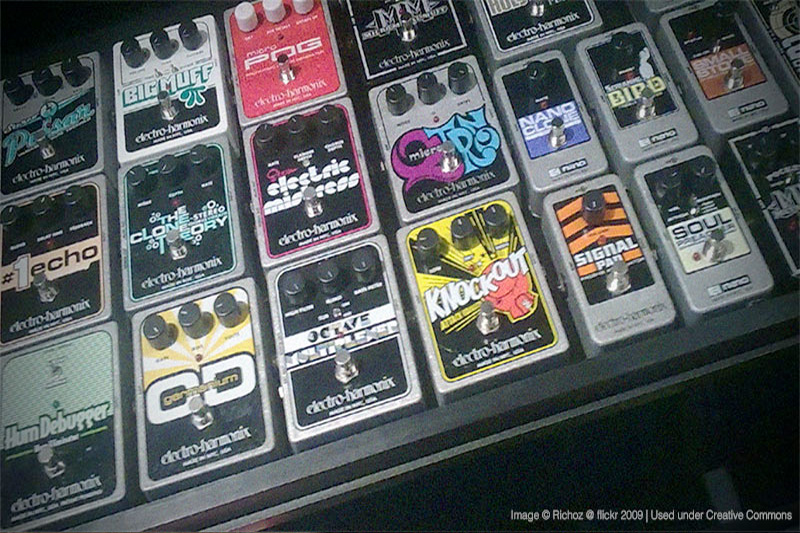We spent a number of very happy but tragically wage-less years in the music industry. Like many companies today, the brands that dominated the equipment market in the 1990’s had to target a very passionate and well informed audience and as a result their personalities were incredibly strong. This was especially true in the accessory market where for us, effects pedals or “stomp boxes” fell into two clear camps.
On the one side were BOSS who were the slick, professional choice. All of their pedals were identically shaped and beautifully designed. We knew they were made by the Japanese high tech instrument company Roland and as a result we perceived them to be innovative, strong and reliable: we paid lots more for these characteristics.
Amazingly their design is absolutely unchanged even today – very few products were designed so “right”. Here is a photo of my old CS-3 compressor pedal from the nineties in front of the online product page of the current version. Spot any difference?

A number of other companies tried to beat them at their own game and launched similarly designed and targeted products. Some, such as DOD, even tried to evoke the same catchy name and while they were probably just as good, BOSS continued to dominate the category.
But this post isn’t really about them.
Think Unique – Brand Positioning as an Opposite
It’s important to remember that if you’re shooting for second place, your strategy is determined by the leader (great quote, right?). Nowhere was this more obvious than in this particular niche market and the only company we thought really challenged BOSS did so with a wildly different approach.
Electro-Harmonix was established by a very charismatic CEO in 1968 and embodied the wild renaissance of guitar playing characterised by perhaps their most famous user, Jimi Hendrix. They were absolutely everything that BOSS was not. From the design to the parent company; you can almost tell everything you need to know just by comparing the two logos.

- Founded and led by a musician from New York
- Each pedal was unique
- Conceived by “mad scientists”
- Elaborate designs
- Retro 1960’s sound

- Founded and led by a Japanese multinational
- Uniform range of products
- Conceived by technicians
- Understated and slick design
- Cutting edge sound
As a result, people in this 1990s feud found themselves falling very naturally into one of two camps. From the one perspective, BOSS loving guitar players were boring and detail obsessed and from the other, Electro Harmonix players were sloppy and cared less about the purity of their tone.
What Can We Learn?
The reason for this flashback to the lowest paid years of our lives is that we recently found an amazing Forbes interview with the founder of Electro-Harmonix, Mike Matthews.
Listening to him talk in this fascinating 8 minute piece, it becomes immediately clear why his company had the brand personality it did – it simply had his personality.
Watching this great film, we think that there are three great pieces of brand positioning advice to take away from here. They are particular important for start-ups and smaller organisations who are either starting their journey or more flexible in their positioning.
1. Find your own path
Don’t play the category leader’s game, it’s more difficult and gives you far less freedom to innovate in your products, marketing or brand strategy.
2. Be your own brand
If you feel passionately about your product or service, why bother thinking of a different brand position for your company? Just carry your genuine convictions through everywhere – keep it simple.
3. Love what you do
As Mike Mathews says this near the end of the film: “If you do something, make sure you like it. That gives you the best chance to succeed”
I hope that you find this as interesting as we did. There are things to learn everywhere if you look hard enough and we’ve helped to roll out this advice to a number of creative start-ups in recent years. In each case they’ve ended up with a simpler, purer and more genuine company personality as a result.
Try to imagine how it might apply to you.



